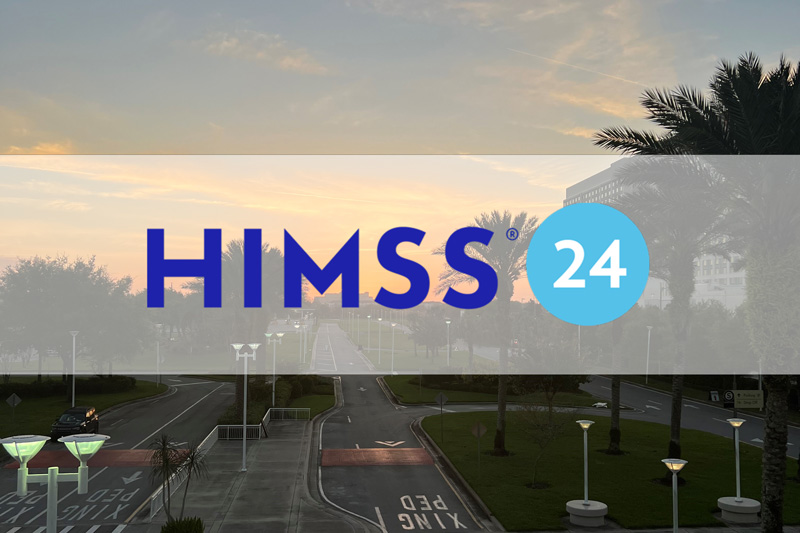 We are back from a successful HIMSS17 show in Orlando. During the conference, I spent much of my time on the show floor, talking to leaders of various healthcare organizations. In addition, I attended many of the educational sessions that HIMSS offered at the event.
We are back from a successful HIMSS17 show in Orlando. During the conference, I spent much of my time on the show floor, talking to leaders of various healthcare organizations. In addition, I attended many of the educational sessions that HIMSS offered at the event.
In both the exhibition hall and the sessions, the themes that came through most clearly were excitement, optimism, and a certain sense of relief. Let’s take a look at how these themes came through in the various topics that generated the most buzz and the takeaways from HIMSS17.
Artificial intelligence
Among the innovations that generated the most excitement was artificial intelligence (AI) and the potential for applying it in healthcare. In her keynote address, IBM CEO Ginni Rometty spoke of the dawn of the “cognitive area” and how IBM is marshaling the Watson AI technology to battle cancer and other diseases. She told the audience that healthcare organizations would face important choices around three platforms that will be critical to employing cognitive effectively: cloud, data and AI.
In his address to CHIME executives, Dr. Joel Selanikio, CEO of Magpi, surmised that consumer-oriented health tools employing AI-based capabilities will likely begin to shift the lion’s share of “health” away from the healthcare industry – dramatically lowering requirements for doctors, nurses and other staff.
The exhibition floor was also replete with vendor examples of how AI could be applied to a variety of healthcare use cases. It seemed that AI had supplanted big data and population health as “the next big thing”. However, in many instances it was difficult to distinguish between them: same story, different name.
Interoperability
On the optimism front, there was a palpable sense that real progress was being made in the interoperability area. The entire industry has rallied around the HL7 FHIR (Fast Healthcare Interoperability Resources) standard. HIT vendors large and small have begun to integrate FHIR-based interfaces into their products to facilitate open, cross-platform exchange of information. The HIMSS Interoperability Showcase featured real-world use cases demonstrating how FHIR and other technologies allowed a spectrum of products to work together seamlessly. A poll by Healthcare IT News showed “Big Data & Analytics” just edging out Interoperability as the topic expected to dominate conversations at HIMSS.
During one of the more than 200 education sessions, a team from Providence Health’s Brain and Spine Institute offered some valuable lessons for deploying analytics on the front lines: Invest time and effort up front to gain trust and promote understanding of your data among the provider user community. That investment will pay future dividends in terms of the impact that analytics will have.
From a visualization perspective, limit the number of ways you present data to information consumers. More can be less when it comes to conveying meaning through charts and tables. Simplicity and consistency often trump artistic flair. Providence’s experience suggests that a “keep it simple approach” not only enhances understanding, but also increases the chances that providers will incorporate data into decision-making. Several other sessions on population health echoed a similar theme: strive to reduce increasingly large and rich datasets down to visualizations and stories that clearly convey what is happening within populations. Data is most useful when it leads to observations and insights that otherwise wouldn’t be apparent.
Healthcare innovation
Finally, there was relief that the regulatory hurdles of the Meaningful Use era have largely been cleared and that the industry can now move forward with innovations that take advantage of the now near universal adoption of HIT. In a HIMSS-facilitated “fireside chat”, former CMS administrators Mark McClellan, who served under George W. Bush, and Andy Slavitt, who just finished his term with the Obama administration, seemed to agree on the direction that several health policy issues will take. For example, they observed that support in Congress for HIT has been consistently strong for well over a decade. They believe this trend is likely to continue, particularly as technology proves central to efforts to lower costs and improve health. MACRA, which received overwhelming bipartisan support, is now law so implementation activities such as the Quality Payment Program will likely move forward on their original timetables.
Slavitt has also made a point of criticizing the HIT industry for focusing on “hype” rather than satisfying its customers. In his current informal role promoting the Affordable Care Act, he has spoken to thousands of healthcare providers who he claims are not happy with the technology solutions available to them. He laid some of the blame for this at the feet of CMS (the agency he ran until recently), which had been overly zealous and too prescriptive in its approach to Meaningful Use regulation, thereby stifling innovation. However, CMS has unwound many of the offending rules, he claimed, opening up new opportunities.
In several appearances during HIMSS, acting national coordinator for healthcare IT, Dr. Jon White, offered hope that policy coming from Washington would be both rational and consistent with the goals that have been guiding federal health policy for the past several years. ONC is currently working under a continuing resolution that authorizes work on legislation, like the already-passed 21st Century Cures Act. There was also a sense from various discussions that incoming Secretary of Health and Human Services Tom Price may be less hostile to some programs from the CMS Innovation Center, such as mandatory bundled payments, than his previous comments have indicated.
All in all, HIMSS seemed like both a celebration of what the industry has accomplished over the past few years and a call to embrace new innovations that promise to usher in disruptive changes in healthcare. These changes are likely inevitable and are coming all too quickly.
Did you find other takeaways from HIMSS17? Let us know in the comments below.
Ready for a test drive of our healthcare analytics software?
- Practical Analysis: The Next Chapter - May 21, 2020
- Exploratory Data Analysis Part 2: Helping You Make Better Decisions - October 11, 2019
- Practical Analysis: Understanding Visualization Concepts - September 19, 2019


